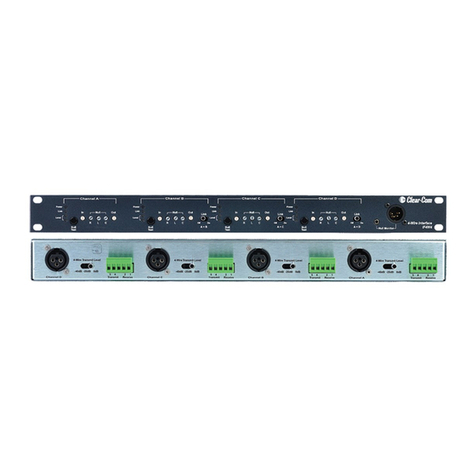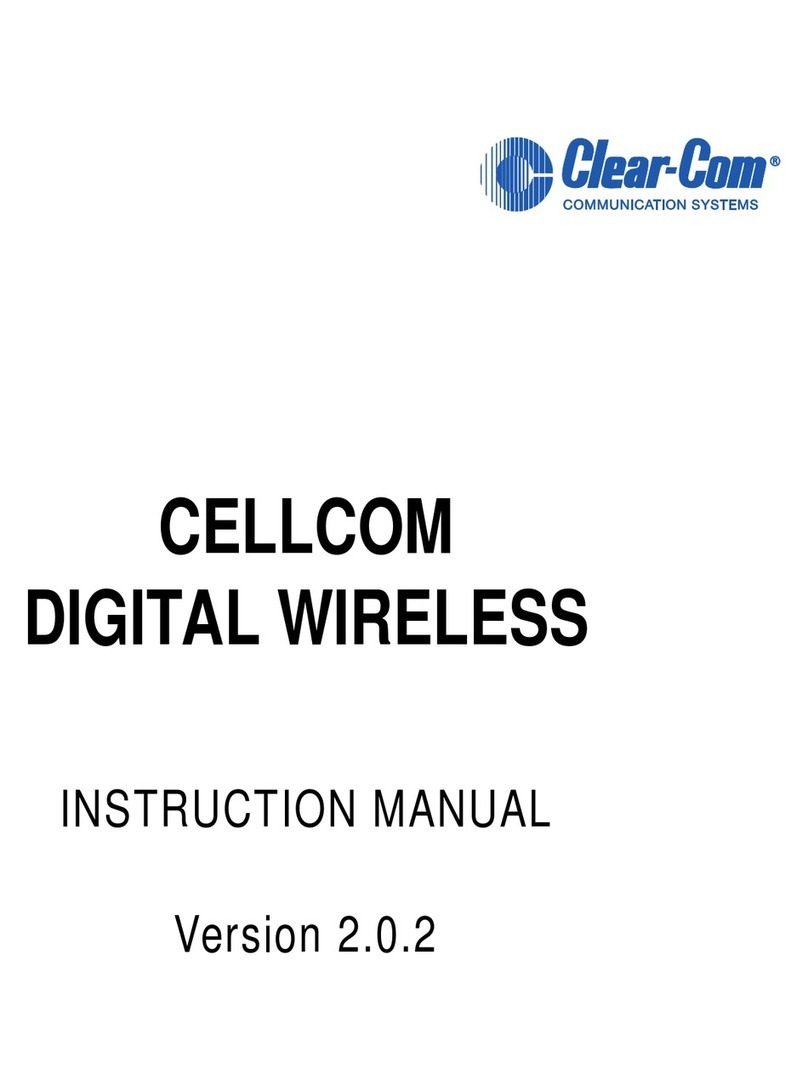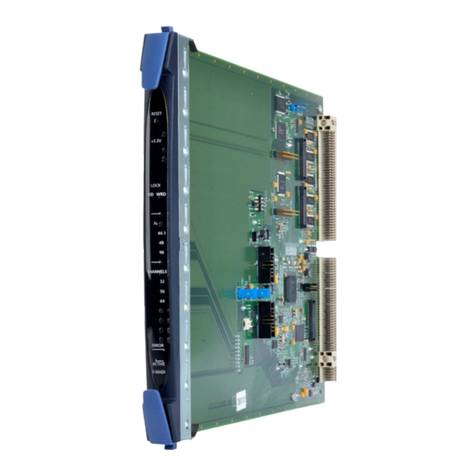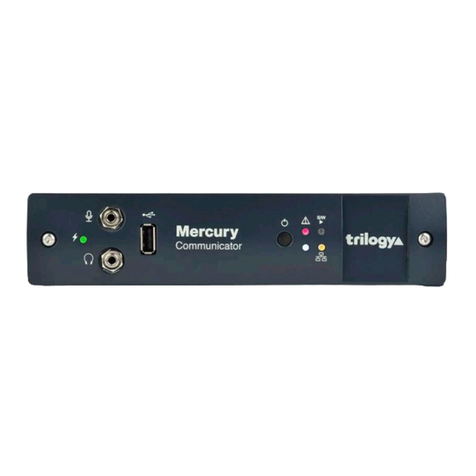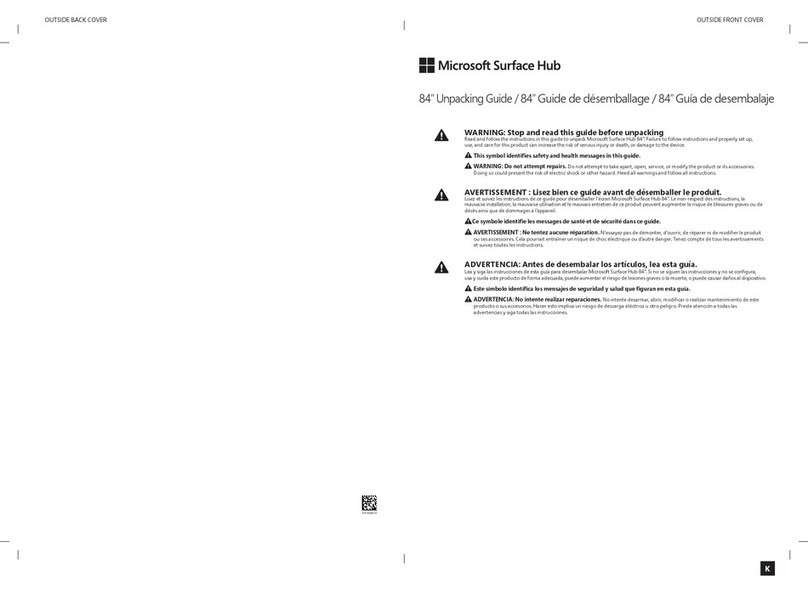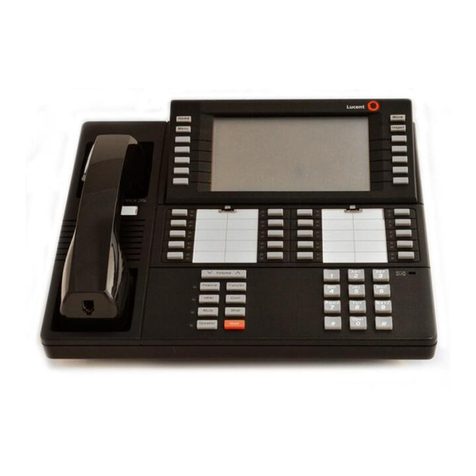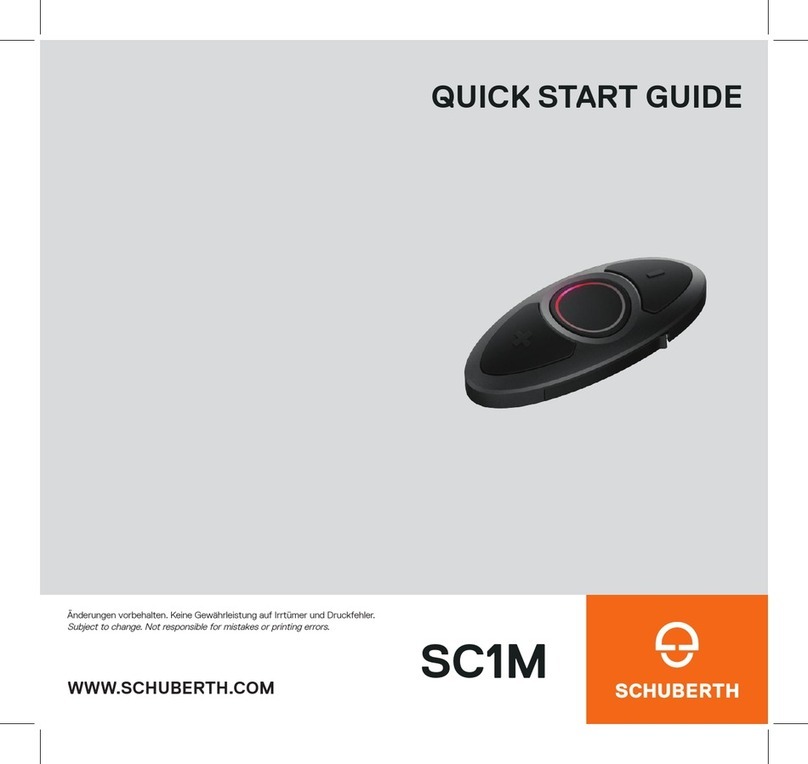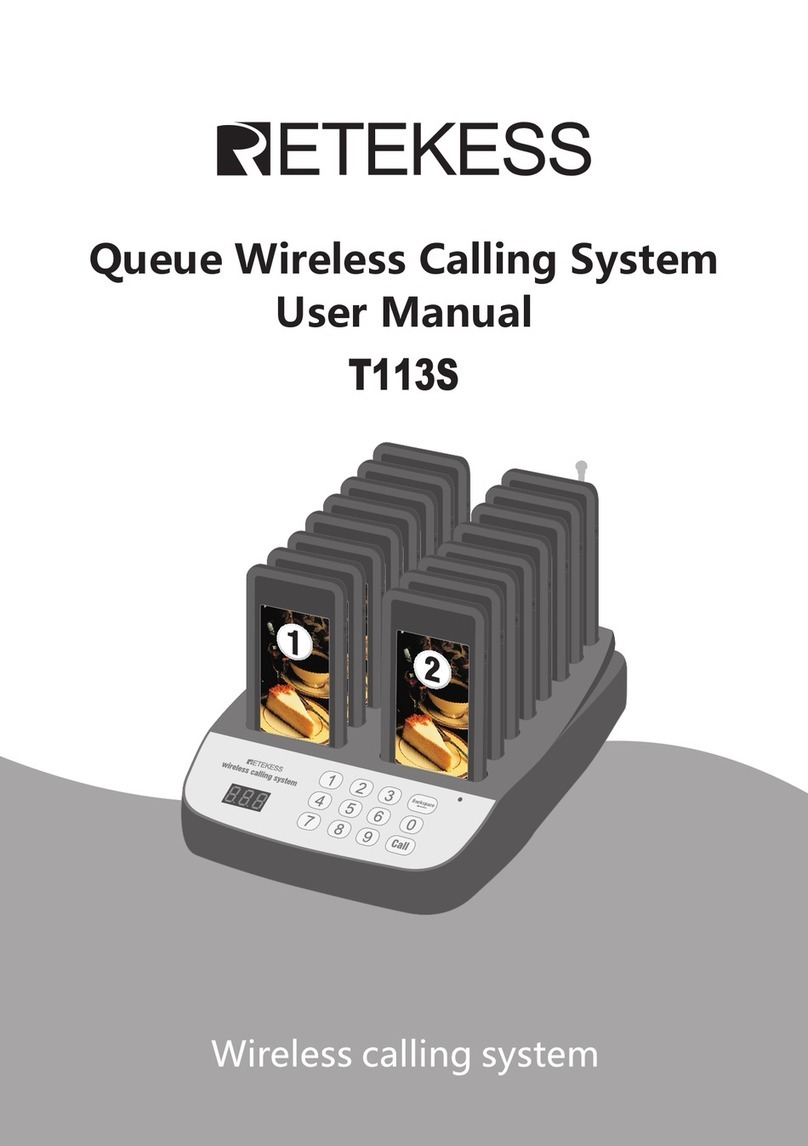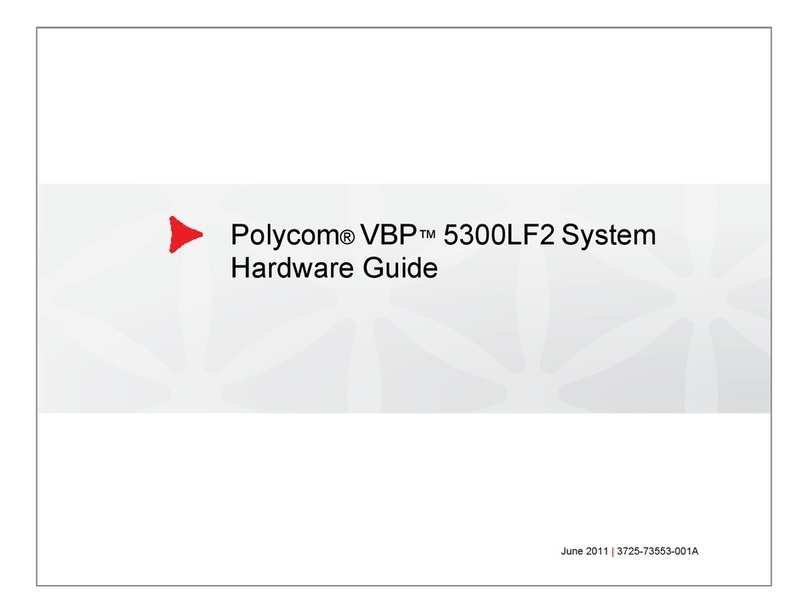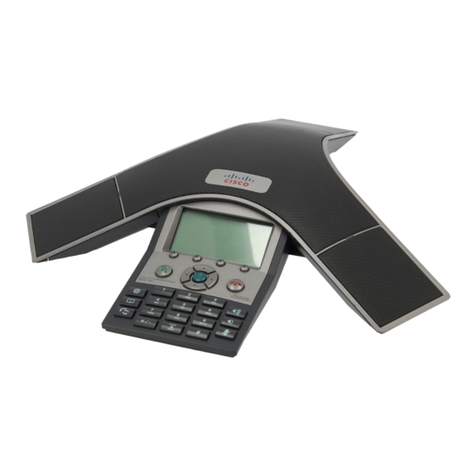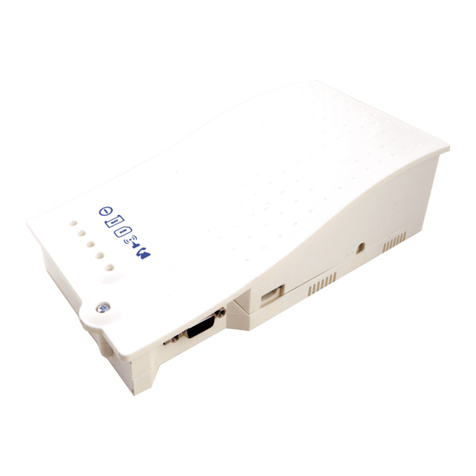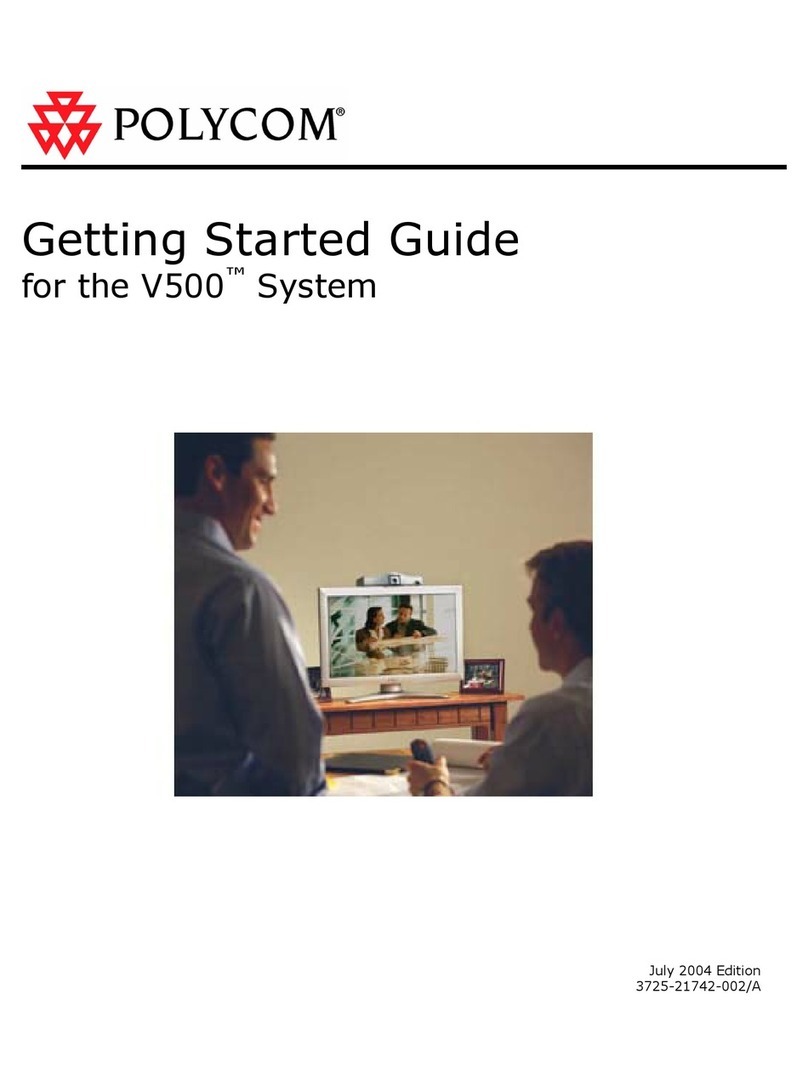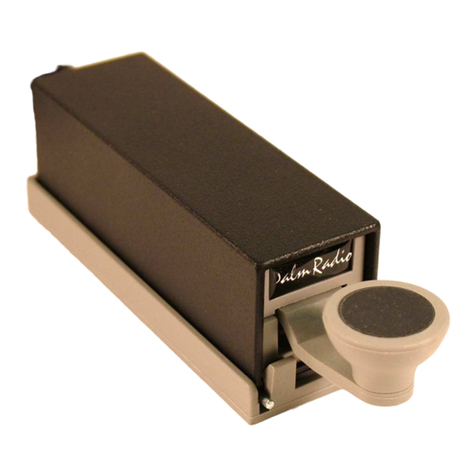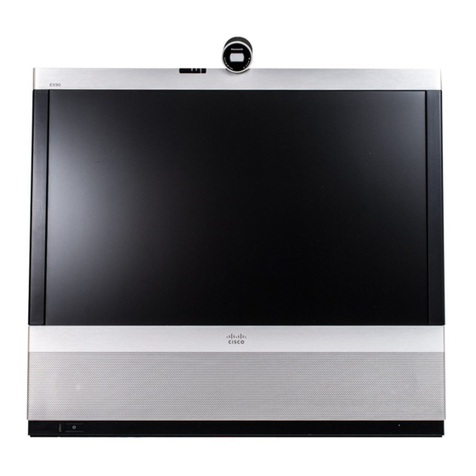Clear-Com FreeSpeak II User manual

FreeSpeak II™
Base Station Version
Part Number: 399G087 Rev D
Date: August 12, 2015
User
Guide

User Guide |FreeSpeak II™ Base station version
Page 2
Document Reference
Clear-Com FreeSpeak II User Guide
Part Number: 399G087 Revision: D
Legal Disclaimers
Copyright © 2015 HME Clear-Com Ltd.
All rights reserved.
Clear-Com and the Clear-Com logo are registered trademarks of HM Electronics,
Inc.
The software described in this document is furnished under a license agreement
and may be used only in accordance with the terms of the agreement.
The product described in this document is distributed under licenses restricting its
use, copying, distribution, and decompilation/reverse engineering. No part of this
document may be reproduced in any form by any means without prior written
authorization of Clear-Com, an HME Company.
Clear-Com Offices are located in California, USA; Cambridge, UK; Dubai, UAE;
Montreal, Canada; and Beijing, China. Specific addresses and contact information
can be found on Clear-Com’s corporate website:
www.clearcom.com
Clear-Com Contacts
Americas and Asia-Pacific Headquarters
California, United States
Tel: +1.510.337.6600
Email: CustomerServicesUS@clearcom.com
Europe, Middle East, and Africa Headquarters
Cambridge, United Kingdom
Tel: +44 1223 815000
Email: SalesSupportEMEA@clearcom.com
China Office
Beijing Representative Office
Beijing, P.R.China
Tel: +8610 65811360 / 65815577

User Guide |FreeSpeak II™ Base station version
Page 3
Contents
Document Reference .............................................................................. 2
1Important Safety instructions ............................................. 10
1.1 Safety symbols ..................................................................... 11
2Introduction to FreeSpeak II™ ............................................ 12
2.1 An FS II communication system............................................... 13
2.1.1 FreeSpeak II system capacity ..................................................... 14
2.1.2 National Radio Carrier Frequencies .............................................. 15
2.1.3 Using multiple Base stations in the same radio frequency (RF)
space ...................................................................................... 16
2.1.4 FSII 1.9 GHz/FSII 2.4 GHz ......................................................... 16
3Installing a system.............................................................. 17
3.1.1 Surveying a site in standalone (rigging) mode............................... 17
3.2 Placing the Base station.......................................................... 18
3.3 Placing the antennas and splitters............................................ 19
3.3.1 Wiring the antennas and splitters ................................................ 19
3.3.2 Power supplies to the components of an FS II System .................... 20
3.3.3 Determining coverage areas ....................................................... 22
3.4 Doing a site survey to determine coverage areas ....................... 23
3.4.1 Doing a site survey with a beltpack.............................................. 23
3.4.2 Testing antenna handoff ............................................................ 25
3.4.3 Getting information on active antenna status ................................ 26
3.4.4 Assigning beltpacks to coverage areas ......................................... 26
3.4.5 Conditions affecting coverage areas............................................. 27
3.4.6 Surveying a site in standalone (rigging) mode............................... 27
3.5 Registering beltpacks ............................................................. 29
3.5.1 Over the air (OTA) registration of a beltpack from the Base
station..................................................................................... 30
4Connecting the Base station ................................................ 33
4.1 Understanding the Back-Panel Connectors ................................ 34
4.2 Connecting to partyline intercom systems ................................. 37
4.2.1 Clear-Com and compatible partyline ............................................ 37

User Guide |FreeSpeak II™ Base station version
Page 4
4.2.2 Connecting to an RTS™ wired beltpack......................................... 39
4.2.3 Front-panel adjustments for partyline connections ......................... 39
4.2.4 Troubleshooting partyline connections.......................................... 40
4.3 Wireless partyline .................................................................. 41
4.4 Connecting to 4-Wire and digital matrix intercom ....................... 42
4.4.2 Connecting to Clear-Com matrix plus ........................................... 44
4.4.3 Connecting to Clear-Com Eclipse digital matrix .............................. 44
4.4.4 Connecting with other digital matrix intercom systems ................... 45
4.4.5 Connecting with other 4-wire devices........................................... 45
4.5 Connecting to a program audio source...................................... 46
4.6 IFB configuration ................................................................... 46
4.7 Connecting to the stage announce output ................................. 47
4.8 Connecting to a PC ................................................................ 48
4.8.1 Connecting using the serial port .................................................. 48
4.8.2 Connecting using the LAN port .................................................... 50
4.9 Connecting to transceiver/antennas ......................................... 50
4.9.1 Connecting one transceiver/antenna directly to a transceiver
port ........................................................................................ 50
4.9.2 Connecting transceiver/antennas with a splitter (PD2203)............... 51
4.9.3 Powering an antenna or antenna splitter....................................... 52
5Operating the Base station .................................................. 53
5.1 Introduction.......................................................................... 53
5.2 Understanding Front-Panel Operation ....................................... 54
5.2.1 Call Channel A .......................................................................... 54
5.2.2 Call Channel B .......................................................................... 54
6Programming a system from the Base station ..................... 58
6.1 Introduction.......................................................................... 59
6.2 Using the Base station’s programming menus............................ 60
6.3 Saving changes ..................................................................... 60
6.4 Changing beltpack labels ........................................................ 60
6.4.1 To change a beltpack label ......................................................... 60
6.5 Setting and changing port labels.............................................. 62

User Guide |FreeSpeak II™ Base station version
Page 5
6.5.1 To create a port label ................................................................ 62
6.6 Setting and changing group labels ........................................... 64
6.6.1 To create a group label .............................................................. 64
6.7 Adding group members .......................................................... 66
6.7.1 To assign members to a group.................................................... 66
6.8 Beltpacks ............................................................................. 67
6.9 Assigning audio routes to a beltpack ........................................ 67
6.10 Setting the beltpack audio level ............................................... 70
6.11 Setting beltpack latching ........................................................ 71
6.12 Over the Air (OTA) beltpack registration from the Base station..... 71
6.13 Setting input and output port levels ......................................... 71
6.13.1 Input level ............................................................................... 72
6.13.2 Output level ............................................................................. 72
6.13.3 To set the audio level for a port .................................................. 72
6.14 Setting port call destination .................................................... 73
6.15 Configuring a wired partyline................................................... 75
6.15.1 To select the type of partyline system for a partyline port ............... 76
6.15.2 To configure the Noise Gate for a partyline port............................. 77
6.15.3 To configure the levels for a partyline port.................................... 78
6.16 Base station System Menu ...................................................... 80
6.17 System Info.......................................................................... 81
6.18 Restoring the Defaults............................................................ 81
6.19 Antennas.............................................................................. 81
6.20 Setting the IP address ............................................................ 82
6.21 Locking front-panel enable buttons .......................................... 83
6.22 Remote microphone kill .......................................................... 83
6.22.1 Kill beltpack microphones........................................................... 84
6.22.2 Kill partyline microphones .......................................................... 84
6.22.3 Kill all microphones ................................................................... 84
6.23 Battery indicator.................................................................... 84
7Operating the wireless beltpack .......................................... 85
7.1 Overview of the wireless beltpack ............................................ 85

User Guide |FreeSpeak II™ Base station version
Page 6
7.2 Beltpack user controls ............................................................ 88
7.2.1 Top controls ............................................................................. 88
7.2.2 Beltpack display........................................................................ 89
7.2.3 Beltpack headset tones/alerts ..................................................... 89
7.2.4 Front controls ........................................................................... 90
7.2.5 Beltpack bottom connectors........................................................ 92
7.2.6 Beltpack rear panel ................................................................... 94
7.3Using the beltpack ................................................................. 94
7.3.1 Registering the beltpack............................................................. 94
7.3.2 Charging the beltpack................................................................ 96
7.3.3 Powering on the beltpack ........................................................... 97
7.3.4 Using the beltpack to communicate ............................................. 98
7.3.5 Entering and exiting Menu mode ................................................. 98
7.3.6 Setting and Adjusting Listen Levels.............................................. 98
7.3.7 Upgrading beltpack firmware ...................................................... 99
8Programming on the beltpack ........................................... 101
8.1 Introduction to programming on the beltpack ...........................101
8.2 Configuring the beltpack volume settings .................................102
8.2.1 Configuring the beltpack channel volumes and master volume........103
8.2.2 Configuring the volume level of the line input...............................103
8.2.3 Configuring the rotary controls...................................................103
8.3 Configuring the beltpack headset ............................................104
8.3.1 Setting headset autodetect........................................................104
8.3.2 Setting the sidetone level ..........................................................105
8.3.3 Setting the headset limiter ........................................................105
8.4 Configuring the beltpack microphone.......................................105
8.4.1 Setting the microphone type......................................................106
8.4.2 Setting the microphone echo cancellation ....................................106
8.5 Configuring the beltpack display and LEDs ...............................106
8.5.1 Setting the display and LED brightness........................................107
8.5.2 Setting the display dim timeout..................................................107
8.5.3 Setting the display off timeout ...................................................107
8.6 Configuring the beltpack alarm options ....................................108

User Guide |FreeSpeak II™ Base station version
Page 7
8.6.1 Setting the low battery alarm ....................................................108
8.6.2 Setting the low battery alarm threshold.......................................109
8.6.3 Setting the out of range alarm ...................................................109
8.6.4 Setting the call alert .................................................................109
8.7 Selecting the beltpack role default set .....................................110
8.8 Selecting the beltpack administration ......................................110
8.8.1 Enabling OTA registration mode .................................................111
8.8.2 Setting full menu access ...........................................................111
8.8.3 Setting system sync mode.........................................................112
8.9 Setting the listen again option ................................................112
8.10 Accessing beltpack information...............................................113
8.11 Setting display mode ............................................................113
8.12 Setting system connect .........................................................113
8.13 Enabling over the air (OTA) registration mode from a beltpack....114
8.14 Performing a site survey ........................................................114
9Operating the transceiver/antenna ................................... 116
9.1 Transceiver/antenna .............................................................116
9.1.1 IP rating (International Protection Marking) .................................116
9.1.2 FS II transceiver/antenna connector panel...................................117
9.1.3 Cabling the antennas................................................................118
9.1.4 Beltpack support capacities for transceiver/antennas.....................118
9.1.5 Coverage areas under various conditions.....................................119
9.1.6 Transceiver/antenna setup rules and tips.....................................119
9.1.7 Upgrading the antenna/transceiver firmware................................120
9.2 Transceiver/antenna splitter (PD2203) ....................................121
9.2.1 PD2203 Front connector panel ...................................................121
9.2.2 PD2203 rear panel ...................................................................122
9.2.3 Connecting an antenna splitter to the FS II Base station and to
transceiver/antennas................................................................123
10 FS II Configuration Editor ................................................. 124
10.1 Loading configurations ..........................................................125
10.1.1 Loading a local configuration file ................................................125

User Guide |FreeSpeak II™ Base station version
Page 8
10.1.2 Loading a configuration file from a Base station using a serial
link ........................................................................................126
10.1.3 Loading a configuration from a Base station using Ethernet ............127
10.1.4 Loading a configuration file to the Base station from the
Configuration Editor .................................................................128
10.2 Configuration Editor Screen basics ..........................................129
10.3 Registering beltpacks using the over the air (OTA) facility ..........130
10.4 Configuring beltpacks............................................................133
10.4.1 Selecting the beltpack to register or edit .....................................133
10.4.2 Registering beltpacks using the micro USB cable ..........................133
10.4.3 Viewing beltpack registration information ....................................134
10.4.4 Viewing beltpack properties .......................................................134
10.4.5 Beltpack audio levels ................................................................136
10.4.6 Beltpack alarm options .............................................................137
10.4.7 Setting the beltpack role options ................................................138
10.4.8 Assigning beltpack keys ............................................................140
10.4.9 Configuring the Reply key .........................................................141
10.4.10 Key assignment types...............................................................142
10.5 Configuring ports..................................................................143
10.5.1 Selecting the port to edit...........................................................143
10.5.2 Changing the label of the port....................................................143
10.5.3 Selecting the port type .............................................................144
10.5.4 Selecting a communication path for the port ................................145
10.5.5 Setting the input, output and VOX levels .....................................146
10.6 Configuring groups and wireless partylines ...............................146
10.6.1 Selecting the group to edit ........................................................147
10.6.2 Changing the label of the group .................................................147
10.6.3 Changing the members of the group ...........................................148
10.6.4 Displaying a group overview ......................................................148
10.7 Reducing antenna interference ...............................................149
10.8 Configuring IFBs...................................................................149
10.8.1 Selecting the IFB to edit............................................................150
10.8.2 Changing the label of the IFB.....................................................150
10.8.3 Changing the IFB sources..........................................................150

User Guide |FreeSpeak II™ Base station version
Page 9
10.8.4 Setting the IFB dim level...........................................................150
10.9 Configuring Base station system parameters ............................151
10.9.1 Editing the system parameters: .................................................151
10.9.2 Change Base station System identifier ........................................152
10.9.3 Enabling Over The Air (OTA) registration .....................................152
10.9.4 Increasing or decreasing the number of beltpacks per Base
station....................................................................................152
10.10 Diagnostics..........................................................................154
10.10.1 Beltpack status ........................................................................155
10.10.2 Static log ................................................................................157
10.10.3 Antenna status ........................................................................157
10.10.4 Antenna roles ..........................................................................158
10.10.5 Event Log ...............................................................................159
10.11 Upgrading the Configuration Editor .........................................161
11 Upgrading the Base station from FS to FS II ..................... 162
11.1 Setting the Base station IP address .........................................162
11.2 Upgrading the Base station firmware .......................................162
11.3 Upgrading the Base station FPGA ............................................162
11.4 Loading the default map ........................................................163
12 Menu maps ........................................................................ 168
12.1 Base station menu map .........................................................168
12.2 Beltpack menu maps.............................................................173
13 Specifications .................................................................... 178
13.1 FreeSpeak II Base station ......................................................178
13.2 FreeSpeak II Beltpack ...........................................................179
13.3 FreeSpeak II Transceiver/Antenna ..........................................180
13.4 FreeSpeak II Transceiver/Antenna Splitter ...............................180
13.5 Transmission Method ............................................................181
14 Compliance........................................................................ 182

User Guide |FreeSpeak II™ Base station version
Page 10
1Important Safety instructions
Read these instructions.
Keep these instructions.
Heed all warnings.
Follow all instructions.
Do not use this apparatus near water.
Clean only with dry cloth.
Do not block any ventilation openings. Install in accordance with the
manufacturer’s instructions.
Do not install near any heat sources such as radiators, heat registers,
stoves, or other apparatus (including amplifiers) that produce heat.
Do not defeat the safety purpose of the polarized or grounding-type plug.
A polarized plug has two blades and a third grounding prong. The wide
blade or the third prong is provided for your safety. If the provided plug
does not fit into your outlet, consult an electrician for replacement of the
obsolete outlet.
Protect the power cord from being walked on or pinched particularly at
plugs, convenience receptacles, and the point where they exit from the
apparatus.
Only use attachments/accessories specified by the manufacturer.
Use only with the cart, stand, tripod, bracket, or table specified by the
manufacturer, or sold with the apparatus. When a cart is used, use
caution when moving the cart/apparatus combination to avoid injury from
tip-over.
Unplug this apparatus during lightning storms or when unused for long
periods of time.
Refer all servicing to qualified service personnel. Servicing is required
when the apparatus has been damaged in any way, such as power-cord
supply or plug is damaged, liquid has been spilled or objects have fallen
into the apparatus, the apparatus has been exposed to rain or moisture,
does not operate normally, or has been dropped.
Use only chargers provided by HME/Clear-Com to charge the battery
packs or beltpacks. These include:
BAT60 Battery pack and beltpack charger manufactured by
HME/Clear-Com

User Guide |FreeSpeak II™ Base station version
Page 11
USB Charger model PA1015-050SIB200/PA1015-1SI/ PA1015-
1SI050200 provided by HME/Clear-Com with your beltpack.
This product uses Lithium Ion Batteries which can be a fire hazard, if used
improperly. Use only HME/Clear-Com supplied BAT60 or equivalent
battery packs to ensure safe operation of the beltpack.
When using AA Batteries follow all safety instructions from manufacturer.
Do not mix different battery chemistries. When depleted, replace all
batteries.
The in-beltpack USB charging feature has only been tested utilizing
USB2.0 port.
Warning: To reduce the risk of fire or electric shock, do not expose this product
to rain or moisture.
1.1 Safety symbols
Familiarize yourself with the safety symbols in Figure 1: Safety symbols. These
symbols are displayed on the apparatus and warn you of the potential danger of
electric shock if the system is used improperly.
Figure 1-1: Safety symbols
Note: For compliance notices, see 14 Compliance.

User Guide |FreeSpeak II™ Base station version
Page 12
2Introduction to FreeSpeak II™
This chapter provides an overview of the FreeSpeak II digital wireless beltpack
system.
With a FreeSpeak II (FS II) wireless beltpack you can roam freely around a site or
facility while talking and listening to all, or selected, members of your team. With
its four communication routes, the beltpack gives you the flexibility to
communicate quickly and seamlessly with individuals or groups, and to change
communication routes as often as needed.
The system operates in the unlicensed 1.9 and 2.4 GHz bands. With its unique
and innovative digital technology, which continually searches for unused radio
frequency (RF) channels, FS II avoids the noise and interference issues associated
with traditional wireless systems using congested UHF and VHF bands.
Figure 2-1 An FS II Base station, antenna, and beltpack
With FS II you can set up a wireless system specifically tailored to local needs by
locating transceiver antennas and beltpacks in areas where they are needed most.
And because the beltpacks operate in the unlicensed 1.9 and 2.4 GHz frequency
ranges, there is no interference with existing wireless systems, even those located
in the same area.
The Base station holds connections for several wired interfaces, including
partylines, 4-wire sources, a program audio source, and a stage announce output
device. When connected to the Base station, these devices communicate
seamlessly with the wireless beltpacks. Partyline beltpacks and 4-wire matrix
stations and panels can key directly to wireless beltpack by name.
Note: This manual covers the use of FS II with a Base station only. For more
information on running an FS II system with an Eclipse-HX matrix, please
see FreeSpeak II™ Integra User Guide (from Eclipse HX 7.6 Version).

User Guide |FreeSpeak II™ Base station version
Page 13
You can configure FS II either from the Base station or from a PC Configuration
Editor.
FreeSpeak II components can be used either with a Base station or with a matrix
equipped with E-Que cards in antenna or splitter mode. For more information, see
the Eclipse HX Configuration Software User Guide.
2.1 An FS II communication system
An FS II system consists of three main elements:
The wireless beltpacks.
The Base station that routes communication to and from wireless
beltpacks and other audio devices, and also allows you to configure the FS
II system.
The transceiver network that provide custom coverage zones in which
beltpacks can operate. Beltpacks can roam freely between coverage
zones.
FS II also includes a drop-in battery charger for the beltpack Li-Ion batteries. You
can conveniently charge the battery by placing the whole beltpack into the
charger.
FS II operates using a cellular network of antennas located around a working
environment. The antennas connect directly to the FS II Base station with CAT-5
cable. Each antenna provides an area or cell in which four to five full-duplex
beltpacks can operate. Figure 2-2 shows an example configuration.
Beltpacks can roam among and between cells without disconnecting because each
beltpack continually signals an antenna as to the strongest available signal. When
the signal from an antenna starts to diminish due to the distance from a beltpack,
the beltpack automatically “hands off” its signal to the nearest antenna, ensuring
smooth transfer.

User Guide |FreeSpeak II™ Base station version
Page 14
Figure 2-2 Configurations for a studio and large-scale broadcast facility
2.1.1 FreeSpeak II system capacity
The FreeSpeak II Base station supports up to 20 beltpacks.
Connecting an antenna splitter to the transceiver port on the back of the Base
Station allows up to 5 antennas to be connected to the system. The Base station
can connect to two splitters and so support up to 10 antennas. Each antenna
supports up to five beltpacks. However, note that the Base station is limited to
operating with 20 beltpacks out of the theoretical 50. Matrix based systems with
access to full clear radio bandwidth (for example, in the EU) can have up to 50
beltpacks present, (25 in the US). Figure 2-2 illustrates how an FS II system can
be set up to operate in a single studio or in a large-scale permanent broadcast
facility.
Note: Each antenna is designed to handle five beltpacks in the 1.9 GHz range and four
in the 2.4 GHz range, simultaneously in good conditions. However, if interference

User Guide |FreeSpeak II™ Base station version
Page 15
or propagation problems occur in an area, to ensure proper operation and
reliability, it may be more practical to install one less beltpack for each antenna.
For zones which are likely to need coverage for up to five or more beltpacks
simultaneously you must install a second antenna. Similarly, for good coverage
for nine or more beltpacks simultaneously, a third antenna may be required.
Radio Frequency
(RF) Band
Minimum number of
Antennas in one RF cell
Maximum number of
beltpacks supported in
one RF cell
1.9 GHz
1
4 - 5
2
8 - 10
3
12 - 15
4
16 - 20
2.4 GHz
1
3 - 4
2
4 - 6
3
7 - 9
4
10 - 12
Figure 2-3 Antenna/beltpack capacity
Note: If more than 20 beltpacks are required, you should upgrade to FreeSpeak II
Integra.
2.1.2 National Radio Carrier Frequencies
The carrier frequencies allocated for a radio space vary according to location. This
affects the amount of belt packs that can be supported in one RF cell.
Location
Number of carrier
frequencies
Maximum belt packs
in one RF cell
United States
5
25 belt packs
European Union and
elsewhere
10
50 beltpacks
Figure 2-4 National Radio Carrier Frequencies

User Guide |FreeSpeak II™ Base station version
Page 16
Note: If necessary, using two RF bands (1.9 GHz and 2.4 GHz) will increase the amount
of beltpacks that can be used in one area or cell.
2.1.3 Using multiple Base stations in the same radio frequency
(RF) space
The FreeSpeak system is designed so multiple Base stations can work in the same
radio space. To ensure smooth coexistence of Base stations, you will need to
make sure that the System Identifier of each Base station does not clash with
another nearby. All FreeSpeak Base stations are shipped with a System Identifier,
located in the Systems tab of the FreeSpeak configuration editor. To ensure that
the belt packs are associated securely with a particular Base station, you might
need to change the System Identifier for that station. See 10.9.2 Change Base
station System identifier.
2.1.4 FSII 1.9 GHz/FSII 2.4 GHz
FreeSpeak II 2.4 GHz frequency range devices
(ISM, Industrial, Scientific and Medical frequency)
Power status LED = Blue
Data synch status LED = Amber
FSII-TCVR-24
FSII-BP-24

User Guide |FreeSpeak II™ Base station version
Page 17
3Installing a system
This chapter explains how to install a FreeSpeak II system, including cable
connections, positioning the equipment, registering beltpacks and performing a
site survey to optimize system performance. It contains the following sections:
Placing the Base station
Placing the antennas and splitters
Doing a site survey to determine coverage areas
3.1.1 Surveying a site in standalone (rigging) mode
You might need to scope a site (check the range and performance of an antenna)
without connecting to a Base station. To do this, a beltpack and antenna can be
put into standalone or rigging mode.
To put a beltpack and antenna into standalone mode:
Make sure you have to hand:
A beltpack
A transceiver/antenna
A DC in XLR (male) power connector for the antenna.
Access to a power socket.
1) Connect the power to the transceiver/antenna and at the same time
press the black mode button on the base of the antenna.
This puts the antenna in standalone mode, and opens it for pairing to a
beltpack.
1) The amber LED flashes continuously to show that the antenna is open for
pairing with a beltpack in standalone mode.
2) From the beltpack, press the menu key (3 second press) and navigate to
System Connect using the right hand rotary controller on the beltpack.
3) Press button Dto see local systems available for connection.
Note: In menu mode the Dkey on the beltpack operates as SELECT and
the C key exits the menu level and cancels the selection.
4) Scroll through available systems using the right hand rotary controller.

User Guide |FreeSpeak II™ Base station version
Page 18
5) When you have found the antenna to pair to (it will be showing a ‘P’ to
indicate that it is ready to be paired to the beltpack) press button Dto
select the antenna and connect the beltpack to it.
6) When the beltpack is successfully connected to the antenna, navigate to
Site Survey in the beltpack menu and monitor the range and
performance of the antenna. For more information on Site Survey
functionality see 3.4.1 Doing a site survey with a beltpack.
Figure 3-6 Using an antenna and beltpack in standalone mode
Registering beltpacks
3.2 Placing the Base station
The first stage in setup is placing the Base station in a convenient location,
knowing that it is the central routing unit of the FS II system. It should be made
accessible.

User Guide |FreeSpeak II™ Base station version
Page 19
At this stage you might choose to register all of the beltpacks with the Base
station, or at least register one or two for system setup and testing.
3.3 Placing the antennas and splitters
The next step is to begin placing antennas and splitters to provide the necessary
coverage areas for all of the beltpacks. The first placements of antennas and
splitters will be experimental and temporary. After placing the antennas, walk
through the coverage areas to check for gaps and then re-locate the antennas
accordingly.
More information on checking coverage areas is given later in this chapter, in
sections:
3.3.3 Determining coverage areas
3.4 Doing a site survey to determine coverage areas
Consider the following:
What areas will have more than five active beltpack users in them at any
time? Co-locate a second antenna there.
Is there a central place to locate an antenna so that it will provide
omnidirectional (all directions / circular) coverage?
Are there balcony areas, corridors, or other rooms or areas that will
require coverage with antennas?
For systems with only one or two transceiver/antennas, the cable runs will go
directly from the two transceiver ports on the Base station. If you need more than
two transceiver/antennas you will need to decide where the splitters that feed
these will be located.
The Base station supports two splitters.
If you need more than one antenna splitter, the second splitter must be
connected directly to the Base station. Splitters cannot be connected in a daisy
chain configuration. Each splitter supports up to 5 antenna/transceivers which in
turn support up to 5 beltpacks.
For antenna coverage options, see 3.3.3 Determining coverage areas.
3.3.1 Wiring the antennas and splitters
To wire antennas and splitters:
1) Run 4-pair shielded Ethernet cable from the Base station to the antenna or
splitter, and determine that the antenna or splitter is showing both power
(green) and signal (amber) LEDs alight when the Base station is on.
Note: To meet FCC emissions requirements, a ferrite must be fitted on any shielded
Ethernet cable plugged into either of the two ports labeled “transceivers.” The

User Guide |FreeSpeak II™ Base station version
Page 20
ferrite should be fitted at the Base station end of the CAT-5 cable. Position the
ferrite as close to the Base station as possible. The manufacturer of the ferrite is
Wurth Elektronix (part number is 742 711 32).
2) Run 4-pair shielded Ethernet cable from the splitter to each of the
transceiver/antennas.
3) Make sure that the local power supplies are plugged into the antennas.
If the green power LED and the amber data LED light up, then the
transceiver/antenna has sufficient power from the cable. If the amber data LED
flashes, a data link is established, and if the LED is solid, Base station
synchronization is established and the system is ready to use. If there are several
longer runs and you are attempting to power the transceiver/antennas from the
Base station / splitter connection, check each one again when they are all
connected. Local powering for the transceiver/antenna is recommended in most
cases to provide the most reliable long-term FS II installation.
During the initial system setup, before walking through the system with a
beltpack to check for gaps in coverage, it is wise to avoid “permanently” installing
the transceiver/antennas. Hold them in place in some temporary way until their
optimal position is determined.
Note: 4-pair shielded Ethernet cable (CAT-5/5e/6) with RJ-45 connectors on each end is
specified for connection between the Base station and the transceiver/antennas.
Use of other cable can result in markedly shorter distances of cable runs and
other possibly other performance problems.
3.3.2 Power supplies to the components of an FS II System
See figure 3-1 and figure 3-2 below for recommended powering and cable lengths
for an FS II system.
Figure 3-1 Recommended antenna and splitter powering schemes and cable
lengths, PSU at splitter only
984 ft)
984 ft)
984 ft)
984 ft)
984 ft)
(1640 ft)
Other manuals for FreeSpeak II
2
Table of contents
Other Clear-Com Conference System manuals
Popular Conference System manuals by other brands

Ericsson
Ericsson BusinessPhone 250 System administrator guide
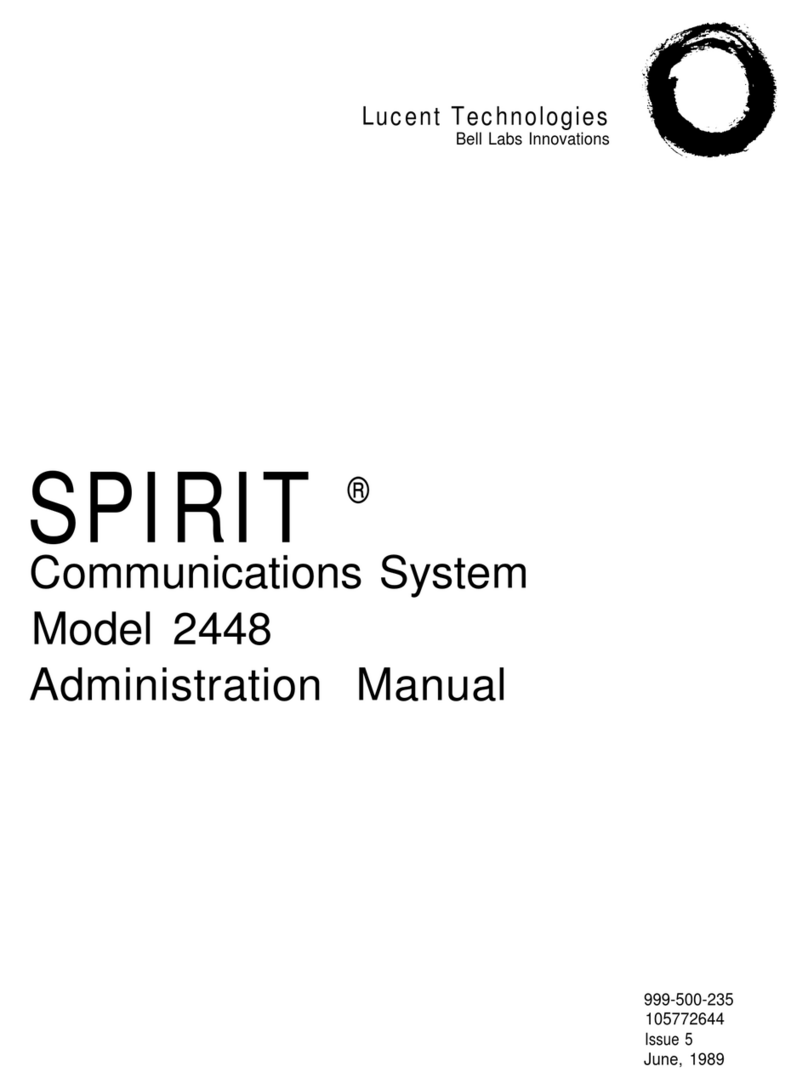
Lucent Technologies
Lucent Technologies SPIRIT 2448 Administration manual

Siemens
Siemens Hicom Office PhoneMail Supplement to the Installation and System Administration Guide
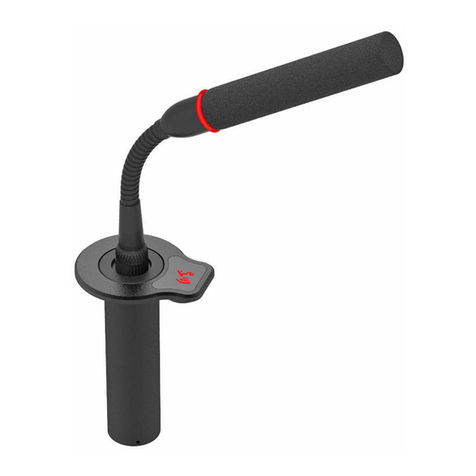
vissonic
vissonic VIS-GSK-F instruction manual

Sony
Sony IPELA PCS-HG90 Specifications
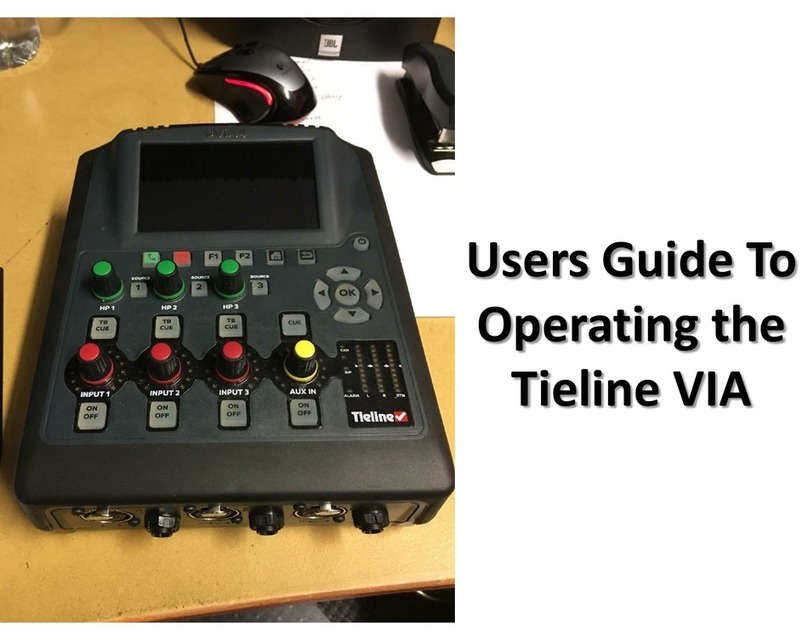
Tieline
Tieline VIA user guide
